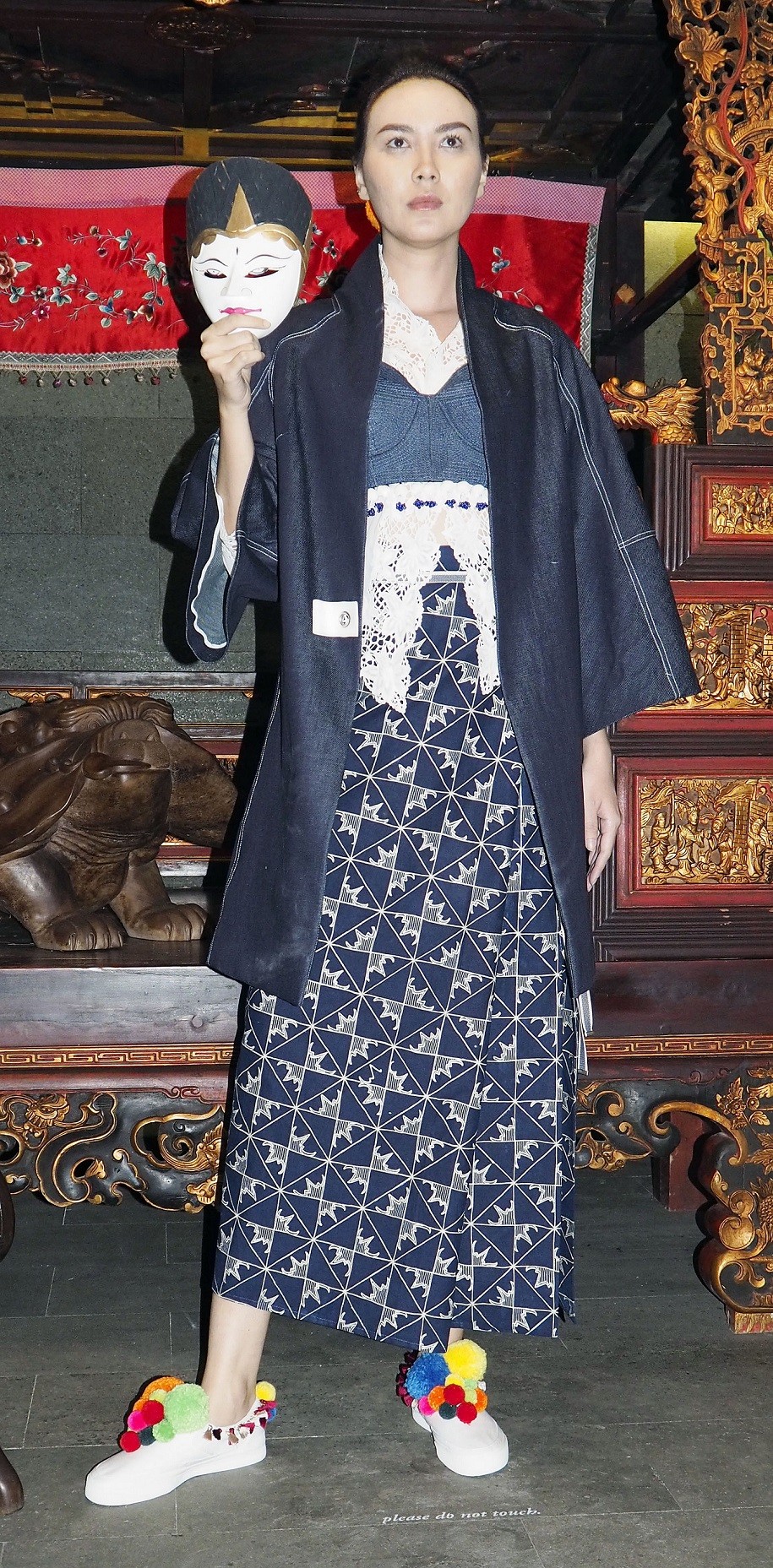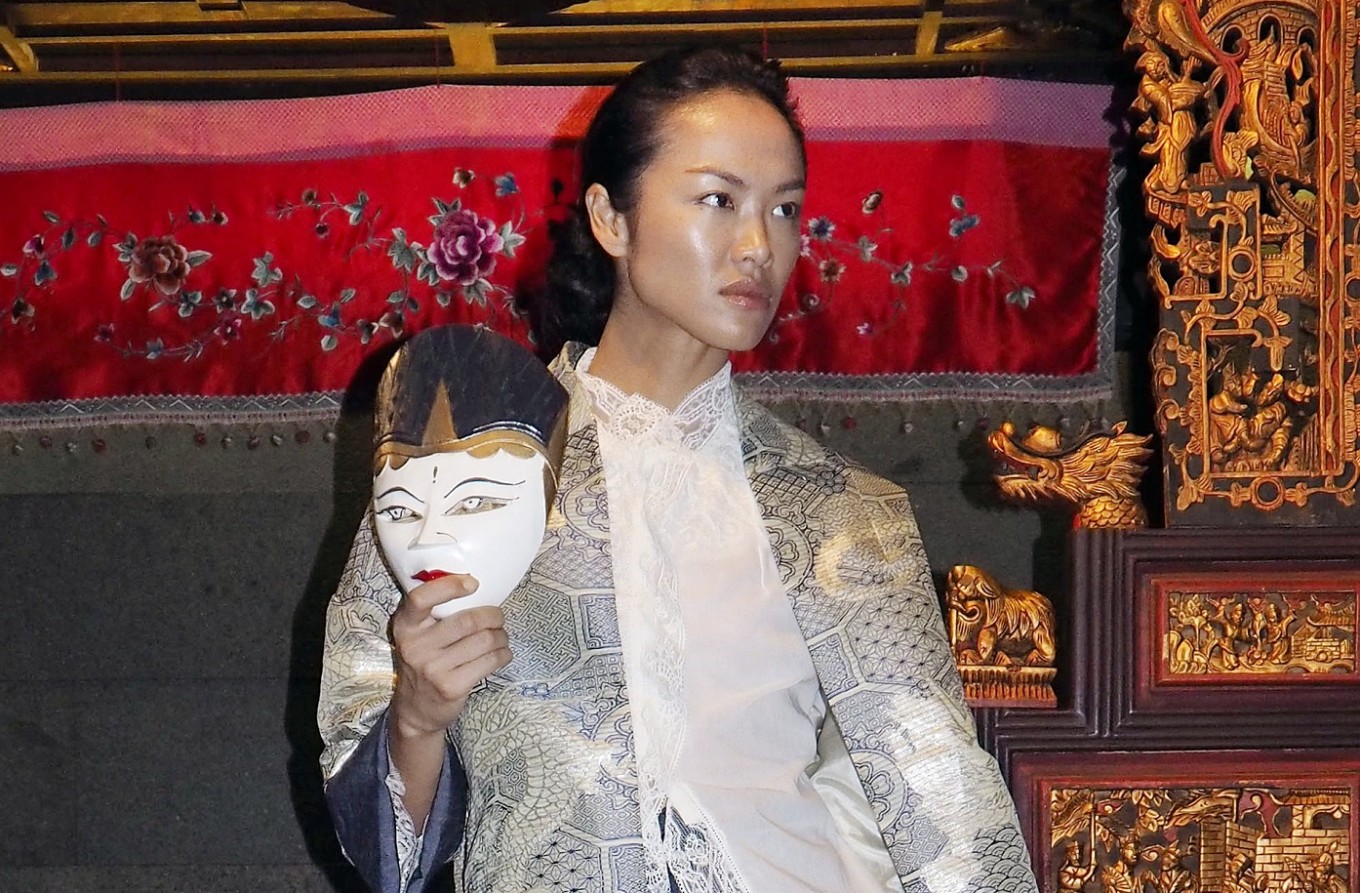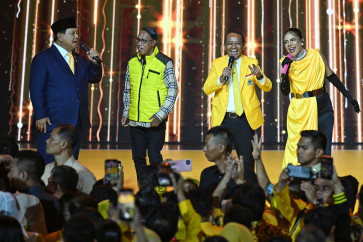Popular Reads
Top Results
Can't find what you're looking for?
View all search resultsPopular Reads
Top Results
Can't find what you're looking for?
View all search resultsPeranakan culture: Major influence on batik, fashion
Traces of Peranakan culture from Chinese descendants are recognizable in the world-acclaimed heritage of Indonesian batik.
Change text size
Gift Premium Articles
to Anyone
A
s an upshot of the early assimilation of local cultures along the archipelago’s coasts and Chinese cultures in the 12th and 13th centuries, Chinese descendants contributed to the processing techniques of local batik as well as the motifs that characterized the fabric’s regions of origin.
The blue-and-white cloud motif of Cirebon batik, megamendung, for instance, came from the motifs of China porcelain, as did the images of phoenixes and dragons and the red in Lasem batik as well as the Chinese paintings of birds and lotuses in Sidoarjo batik.
The lively motifs are tantamount to the industry that gave founding president Sukarno the idea in the early 1960s to order Java cultural observer Gow Thiek Swan to create “Indonesian batik” by merging two major schools of batik on Java: the inland batik of Surakarta and Yogyakarta’s colorful coastal batik.
Surakarta-based Gow came up with batik tiga negeri (three lands) characterized by three dominant colors: red, black and blue.
The coloring took place in three regions: red in Lasem, black in Surakarta and blue in Pekalongan, hence the name.
Batik acculturation, however, has been left behind in the past two decades due to the complex processing and high value. “Not many people know about batik tiga negeri despite its importance to the societies that adopt the culture. In a region in West Java, a wedding can be cancelled if the cloth is not included in the bridal gifts,” said renowned fashion designer Didi Budiardjo. “In some societies, the cloth is considered medicinal. A mother would wrap her sick child in it or cut a small piece of it and make a concoction from the ash of the burned cloth as curative treatment.”
In a bid to reintroduce the socalled Indonesian batik and the Peranakan influence on traditional fashion, furniture, architecture and cuisine, Didi took part in a joint exhibition of fashion and installations dubbed “Tiga Negeri”, together with designers Edward Hutabarat and Adrian Gan.
At the opening of the exhibition at the dia. lo.gue art gallery in Kemang, South Jakarta, the three designers showcased their works with batik tiga negeri as their main inspiration and material.
(Read also: Batik: a cultural dilemma of infatuation and appreciation)
 Didi Budiardjo(JP/Donny Fernando)
Didi Budiardjo(JP/Donny Fernando)
Didi Budiardjo showed a collection of twopieces consisting of the batik cloth paired with tops inspired by the embroidered kebaya encim (traditional blouses) — also a part of Peranakan culture.
The simple and modern cuts of the traditional outfits emphasized an elegant look fit for formal events or a batik-themed gala.
Edward Hutabarat, on the other hand, presented the fun side of batik megamendung. The collection of resort wear combined kebaya encim as outerwear with high-waisted palazzo trousers.
 Edward Hutabarat(JP/Donny Fernando)
Edward Hutabarat(JP/Donny Fernando)
A more edgy look came from Adrian Gan, who adopted denim and details of kimonos that could be worn on Harajuku streets. To complete the style was a pair of sneakers embellished with colorful furry balls inspired by Jakarta’s Betawi Tari Topeng dance costume.
 Betawi in mind: Adrian Gan combines denim, kebaya encim, and batik to create an edgy look inspired by Betawi's Tari Topeng dance attire.(JP/Donny Fernando)
Betawi in mind: Adrian Gan combines denim, kebaya encim, and batik to create an edgy look inspired by Betawi's Tari Topeng dance attire.(JP/Donny Fernando)
(Read also: Rocking low-maintenance fashion, Jokowi style)
The opening event last Saturday was attended by former first lady Sinta Nuriyah, Jakarta Governor Basuki “Ahok” Tjahaja Purnama’s wife Veronica Tan, film producer Nia Dinata, restaurateur Lily Atmodirjo and photographer Davy Linggar, among others with Peranakan backgrounds or interests.
“It took only three days to prepare the exhibition because there were so many friends eager to take part in it as they shared the same concerns over the growing intolerance in society,” said Edward, who initiated the event.
“We want to show the public the artifacts of Peranakan culture as proof of its existence and its influence and relevance to urban life today.”
The three designers are also showing collections of antique batik, kebaya encim, ceramics and jewelry at the gallery until Feb. 5.
The collection of batik — some of which belonged to the late Gow Thiek Swan and the Tjoa family in Surakarta — includes the 1958 Thomas Cup batik, created to honor the first Indonesian badminton players of Chinese descent to win the prestigious game.
Adrian said all Indonesian designers were familiar with cultural assimilation in Indonesian embroidery, batik and woven cloth.
“Peranakan is just one of the influences that makes up Indonesian identity. We are planning to hold more exhibitions on the influence of other world cultures.”











